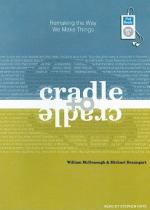|
This section contains 476 words (approx. 2 pages at 400 words per page) |

|
Why Being Less Bad is No Good Summary and Analysis
As soon as early factories begin to evince dangers, people have been trying to undo them. Thomas Malthus, an 1800's writer, points out that the end result of the Industrial Revolution will be destruction. Malthus is not popular during his day. During the next century, the Romantic writers are inspired by nature and point out that industrialism destroys it. During the early 1900's, writers with the point of view of the Sierra Club begin to understand the relationship between consumerism and the destruction of nature. In 1962, Rachel Carson writes Silent Spring, which at particular points out the dangers of DDT, which is eventually banned in the U.S. and in Germany in the 1970's. At the same time, Paul Erlich is writing about the negative consequences of overpopulation and...
(read more from the Why Being Less Bad is No Good Summary)
|
This section contains 476 words (approx. 2 pages at 400 words per page) |

|




